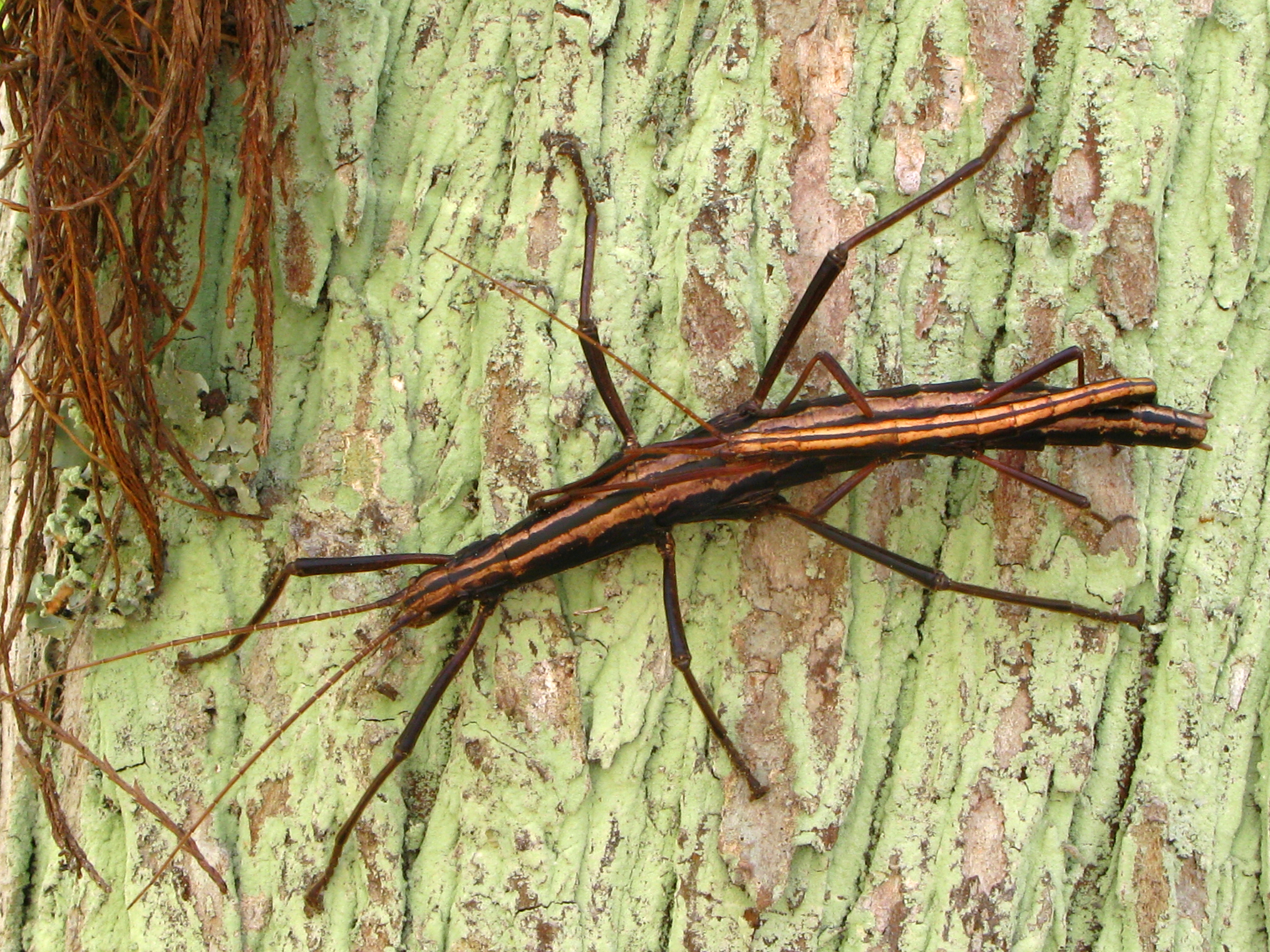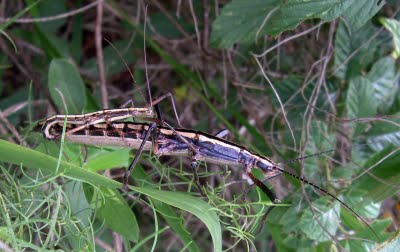Fun Facts
-
In
this species, the female Anisomorpha buprestoides is much longer,
thicker, and stronger than the male. In fact, she is nearly
always carrying him.

- A. buprestoides has a plethora of nicknames,
including: “Southern Two-Striped Walking Stick,” “Devil Rider,”
“Spitting Devil,” “Devil’s Riding Horse,” “Prairie Alligator,”
“Muskmare,” “Florida Walking Stick,” “Devil’s Darning Needle,”
“Witch’s Hose,” and more (Samuel 2010).
- This is the most common species of walking sticks in
Florida (Sharp 2014).
- A. buprestoides can regenerate lost legs (Sharp 2014).
- A. buprestoides has also exhibited strange behavior
immediately before
hurricanes hit. In 2004, all the males that
had a female partner within a large aggregation of the white form
simultaneously started drumming their legs against the leaves they
rested on for about two minutes, just before
a hurricane began ten to fifteen minutes later (Tozier 2005).

- Newly hatched walking sticks are referred to as nymphs.
- When Stoll first discovered A. buprestoides, he described the
first male he found as a completely different species from the
first female (Conle et al. 2009).
- Take caution if you ever approach a two-striped walking stick,
and protect your pets too. These insects can
spray accurately
from up to 30 to 40 centimeters away, and
dogs have often been
victims of their attack (Thomas 2003).
←Interactions
Home
References→

